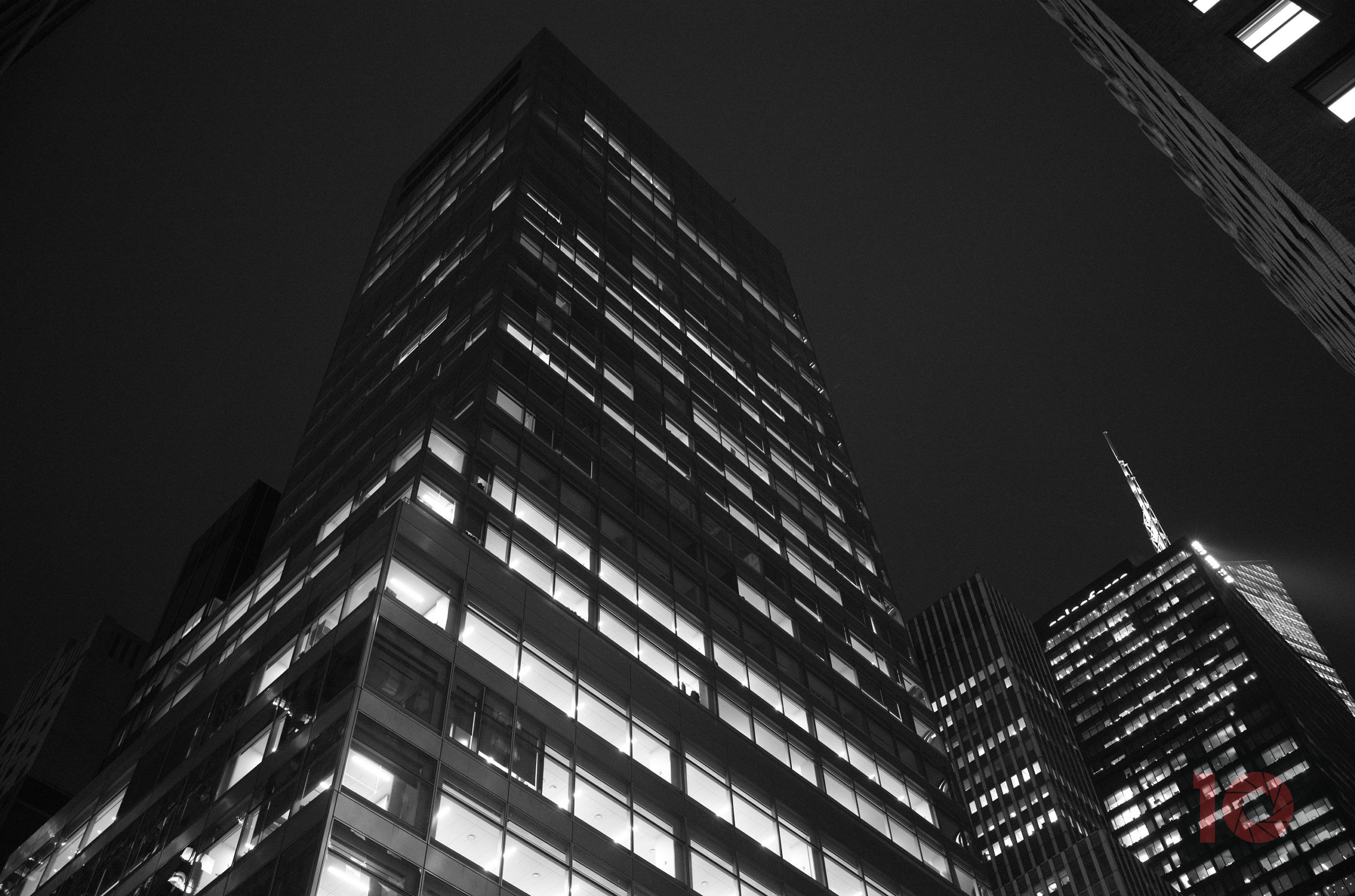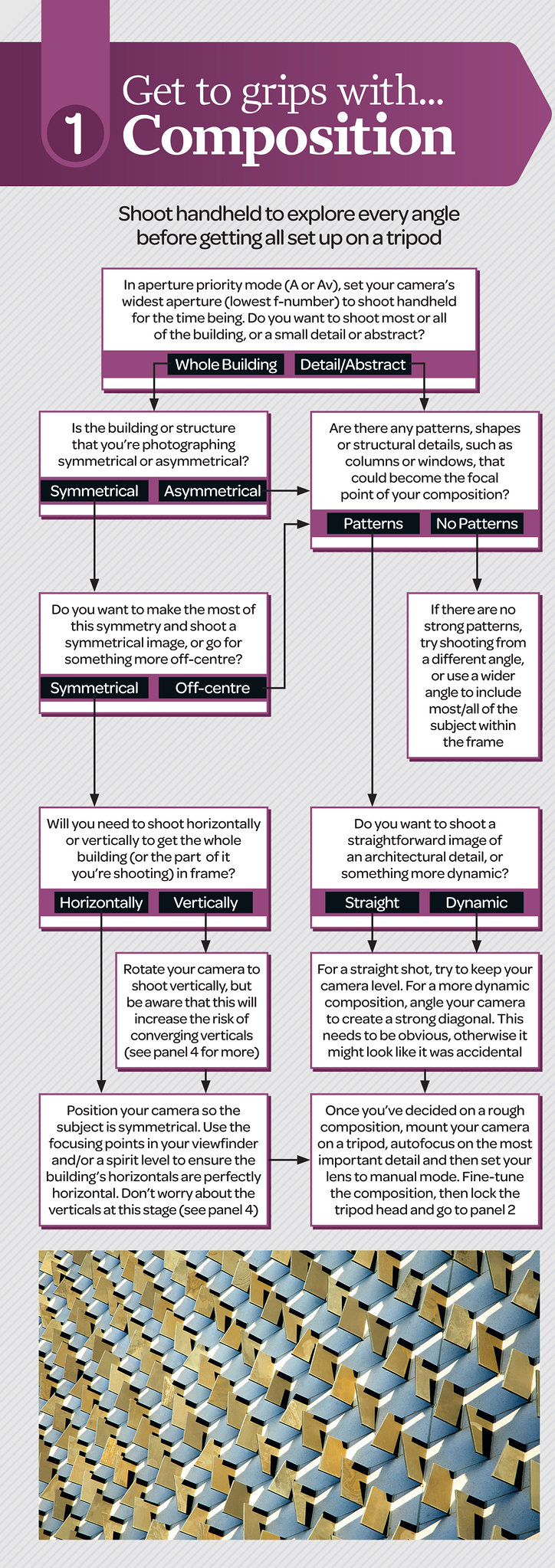If you’re just getting into architectural photography, composition is one of the first things to work on. We have just the photography cheat sheet to help with that!
As many of the projects we’ve previously featured show, exceptional architectural photography involves more than just pointing a camera to buildings and architectural elements. Composition is key, as is the case with great photography in general. If you think you need some help with composition for architectural photography, today’s photography cheat sheet will help you come to grips through some simple tips.
The quick flow chart below, put together by Digital Camera World, tells us we can approach architectural photography composition either by showcasing the buildings and structures in their entirety or through a more artistic, abstract route. Some buildings are best photographed with the former, while some details may be worth a closer look.
Before anything else, make sure you’re shooting in aperture priority mode and you’ve set your camera to its widest aperture. You’ll have to walk around the location and shoot handheld for the meantime.
If your subject is a building that looks best when photographed in its entirety, composing your shot for symmetry is the best bet. Next, you have to choose between a horizontal shot or a vertical shot. Be aware, however, that shooting vertically increases the risk of converging verticals (we’ll get to that in a dedicated cheat sheet). When shooting horizontally, make sure to position your camera in such a way that your subject is symmetrical. Use the focusing points in your viewfinder or a spirit level to make sure the horizontal elements are perfectly horizontal. Settle on a rough composition, and when you’re ready, mount your camera on a tripod. Set the autofocus on the most important detail, then set the lens to manual mode. Fine-tune your composition if necessary.
Meanwhile, if your building has some eye-catching details that warrant an abstract approach, you’ll have to either go for patterns or photograph them from different angles. Use a wider angle lens to capture as much of the subject as possible in your frame. If there are patterns or structural elements present, you have the option to make the composition straight or dynamic. For the former, keep your camera level; for the latter, create a strong diagonal that looks intentional instead of accidental. Once you’re happy with your composition, follow the same tips above for mounting your camera on a tripod.
Looking for more useful photography tips and tricks like these? We have loads more in our growing collection of photography cheat sheets!



